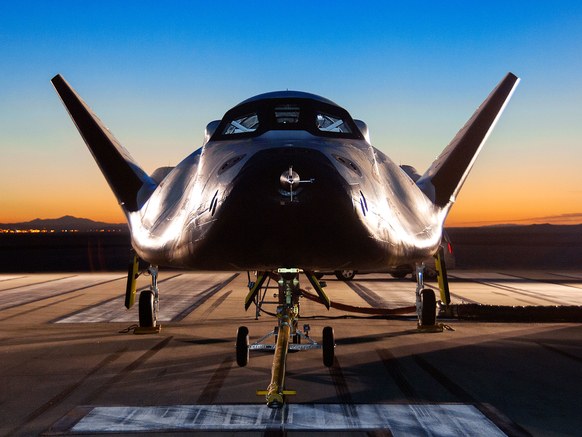THIS MORNING AROUND 7 am, the motors of a gigantic, beluga-bodied helicopter cut on with a thunder. The murmur orchestrated with the resonations of Edwards Air Force Base, north of Los Angeles. As the Chinook's two tremendous rotor cutting edges began to turn, impacting hot vapor smeared the monochrome stripes of asphalt, abandon floor, mountain edge, and sky over NASA's Armstrong Flight Research Center. And after that, at long last, the copter started to suspend. As it pulled itself increasingly elevated, a long tie spooled up starting from the earliest stage.
At the flip side of the rope, another shuttle called the Dream Chaser sat tight for that tie to go rigid and pull it from the asphalt. Contrasted with its escort, Dream Chaser is modest: At 30 feet long, it would appear that a Matchbox auto crossed with a stingray. However, it has outsize aspirations. Its creator, Sierra Nevada Corporation, calls it a "space utility vehicle," advertising it as a group and load transport to low Earth circle. After conveyance, the thought goes, it will fly down to the sort of runways that line enormous city air terminals. That could make it an extraordinarily available bit of space foundation—for NASA, different countries, or even organizations that need to attempt their hands at spaceflight.
Amid the present "hostage convey" test, Sierra Nevada meant to see whether its SUV rides of course at the heights where it will later free-fly. In any case, it's not prepared to go that high all alone, so the Chinook lifted it there, flying it around in circles like a parent keeping a hand on the back of a child's bicycle situate.
SIERRA NEVADA CORPORATION
The Dream Chaser's essential outline originated from Russia—or, to be more exact, from keeping an eye on Russia. In June 1982, an Australian surveillance plane traveled over the Indian Ocean and saw a Soviet ship gobbling up some sort of sprinkled down shuttle. The specialty looked short and squat, more like a toy than a space-faring vehicle. Its wings twisted up like the folds of a plane headrest.
The Australians, without their very own space program, turned the photographs over to the US, and American insight officers turned them over to NASA's Langley Research Center.
Langley engineers took blades to cherry wood, cutting out the vehicle that the Soviets called BOR-4. "We were figuring out it," Del Freeman, one of the representatives who'd worked from those photographs, told NASA in 2011. "At long last, we got enough data to manufacture a model and we place it into [a wind] burrow. When we tried it, we truly made sense of that we had something."

Nice ..thanks for sharing
Downvoting a post can decrease pending rewards and make it less visible. Common reasons:
Submit
welcom
Downvoting a post can decrease pending rewards and make it less visible. Common reasons:
Submit